-
×
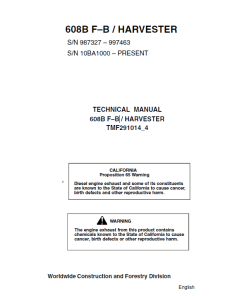 John Deere 608B Tracked Feller Buncher Harvester Repair Manual
$39.00
John Deere 608B Tracked Feller Buncher Harvester Repair Manual
$39.00 -
×
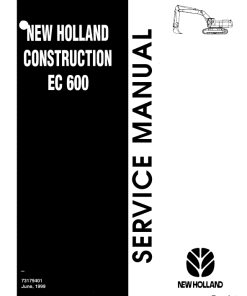 New Holland EC600 Crawler Excavator Service Manual
$34.00
New Holland EC600 Crawler Excavator Service Manual
$34.00 -
×
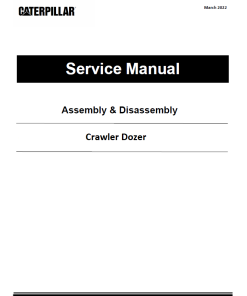 Caterpillar CAT D3C Track-Type Tractor Service Repair Manual (3RF00001 and up)
$70.00
Caterpillar CAT D3C Track-Type Tractor Service Repair Manual (3RF00001 and up)
$70.00 -
×
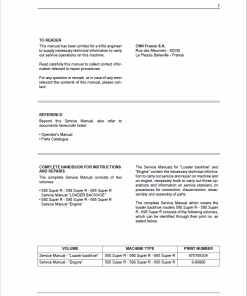 Case 580, 590, 695 Super R Backhoe Loader Service Manual
$34.00
Case 580, 590, 695 Super R Backhoe Loader Service Manual
$34.00 -
×
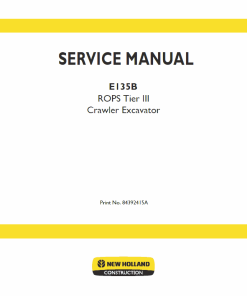 New Holland E135B ROPS Tier 3 Excavator Service Manual
$34.00
New Holland E135B ROPS Tier 3 Excavator Service Manual
$34.00 -
×
 Komatsu PC270LC-6LE Excavator Service Manual
$34.00
Komatsu PC270LC-6LE Excavator Service Manual
$34.00 -
×
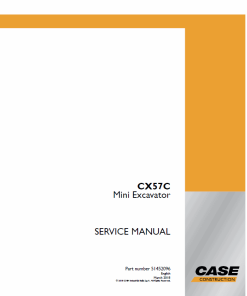 Case CX57C Mini Excavator Service Manual
$36.00
Case CX57C Mini Excavator Service Manual
$36.00 -
×
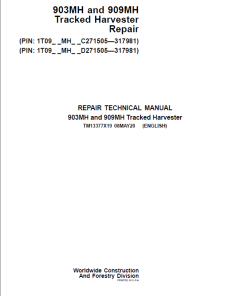 John Deere 909MH Harvester Repair Manual (S.N C271505 - C317981 & D271505 - D317981)
$57.00
John Deere 909MH Harvester Repair Manual (S.N C271505 - C317981 & D271505 - D317981)
$57.00 -
×
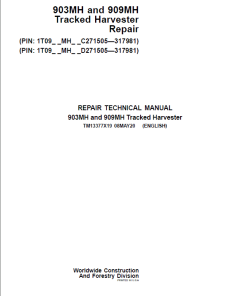 John Deere 903MH Harvester Repair Manual (S.N C271505 - C317981 & D271505 - D317981)
$57.00
John Deere 903MH Harvester Repair Manual (S.N C271505 - C317981 & D271505 - D317981)
$57.00 -
×
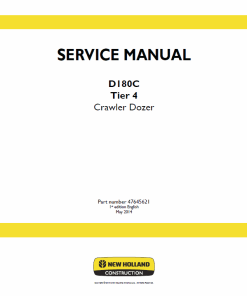 New Holland D180C Tier 4 Crawler Dozer Service Manual
$36.50
New Holland D180C Tier 4 Crawler Dozer Service Manual
$36.50 -
×
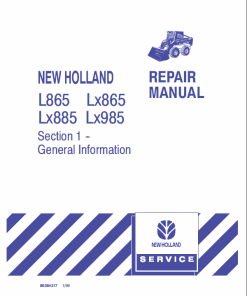 New Holland L865, LX865, LX885, LX985 SkidSteer Loader Service Repair Manual
$35.00
New Holland L865, LX865, LX885, LX985 SkidSteer Loader Service Repair Manual
$35.00 -
×
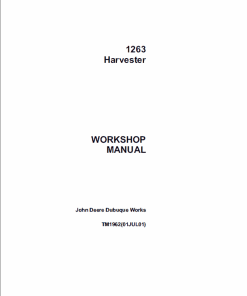 John Deere 1263 Harvester Repair Technical Manual (TM1962)
$35.00
John Deere 1263 Harvester Repair Technical Manual (TM1962)
$35.00 -
×
 Liebherr TL436 Type 1620 Telescopic Handler Service Manual
$34.50
Liebherr TL436 Type 1620 Telescopic Handler Service Manual
$34.50 -
×
 Caterpillar CAT D6R II Track Type Tractor Service Repair Manual (AGM00001 and up)
$70.00
Caterpillar CAT D6R II Track Type Tractor Service Repair Manual (AGM00001 and up)
$70.00 -
×
 Caterpillar CAT D10R Track Type Tractor Service Repair Manual (3KR00001 and up)
$80.00
Caterpillar CAT D10R Track Type Tractor Service Repair Manual (3KR00001 and up)
$80.00 -
×
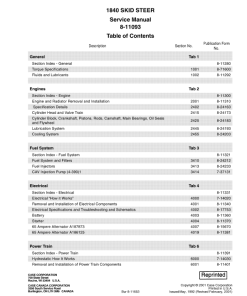 Case 1840 Skidsteer Service Manual
$34.00
Case 1840 Skidsteer Service Manual
$34.00 -
×
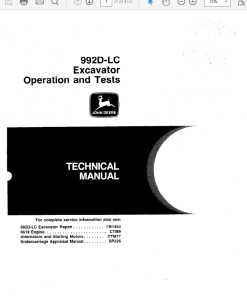 John Deere 992D-LC Excavator Technical Manual (TM1462 and TM1463)
$39.00
John Deere 992D-LC Excavator Technical Manual (TM1462 and TM1463)
$39.00 -
×
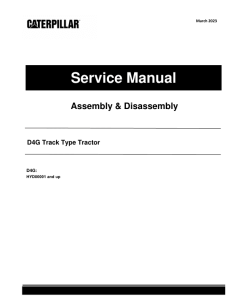 Caterpillar CAT D4G Track-Type Tractor Service Repair Manual (HYD00001 and up)
$65.00
Caterpillar CAT D4G Track-Type Tractor Service Repair Manual (HYD00001 and up)
$65.00 -
×
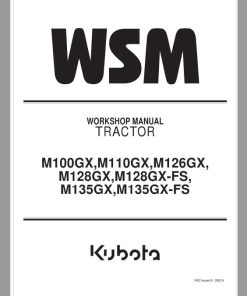 Kubota M100GX, M110GX, M126GX, M128GX, M135GX Tractor Service Repair Manual
$38.00
Kubota M100GX, M110GX, M126GX, M128GX, M135GX Tractor Service Repair Manual
$38.00 -
×
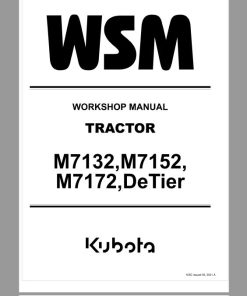 Kubota M7132, M7152, M7172 Tractor Workshop Service Repair Manual
$40.00
Kubota M7132, M7152, M7172 Tractor Workshop Service Repair Manual
$40.00 -
×
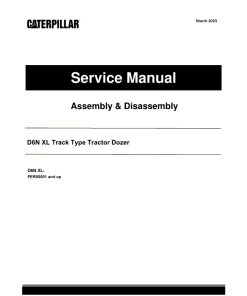 Caterpillar CAT D6N XL Track Type Tractor Service Repair Manual (PER00001 and up)
$70.00
Caterpillar CAT D6N XL Track Type Tractor Service Repair Manual (PER00001 and up)
$70.00 -
×
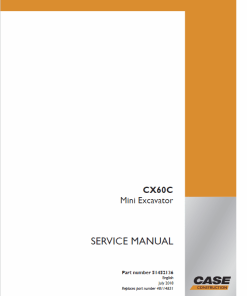 Case CX60C Mini Excavator Service Manual
$36.00
Case CX60C Mini Excavator Service Manual
$36.00 -
×
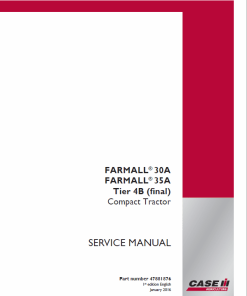 Case Farmall 30A, 35A, 40A Tractor Service Manual
$36.00
Case Farmall 30A, 35A, 40A Tractor Service Manual
$36.00 -
×
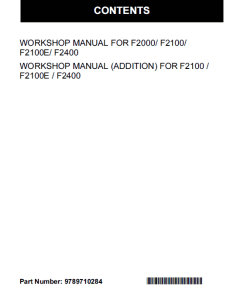 Kubota F2000, F2100, F2100E, F2400 Front Mower Workshop Service Manual
$34.00
Kubota F2000, F2100, F2100E, F2400 Front Mower Workshop Service Manual
$34.00 -
×
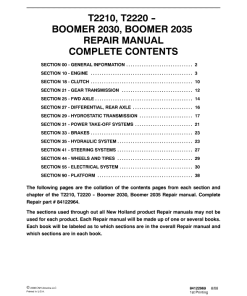 New Holland Boomer 2030 and Boomer 2035 Tractor Service Manual
$34.00
New Holland Boomer 2030 and Boomer 2035 Tractor Service Manual
$34.00 -
×
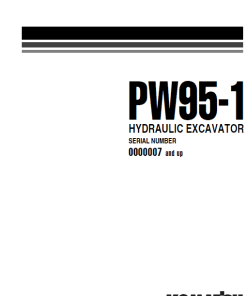 Komatsu PW95-1 Excavator Service Manual
$33.00
Komatsu PW95-1 Excavator Service Manual
$33.00 -
×
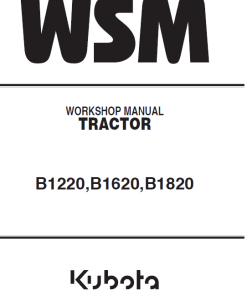 Kubota B1220, B1620, B1820 Tractor Workshop Manual
$32.00
Kubota B1220, B1620, B1820 Tractor Workshop Manual
$32.00 -
×
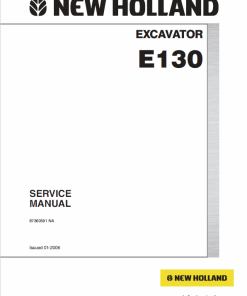 New Holland E130 Excavator Service Manual
$33.50
New Holland E130 Excavator Service Manual
$33.50 -
×
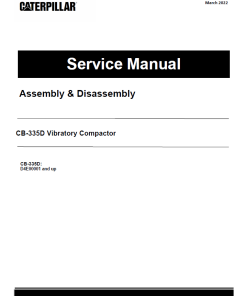 Caterpillar CAT CB-335D Vibratory Compactor Service Repair Manual (D4E00001 and up)
$50.00
Caterpillar CAT CB-335D Vibratory Compactor Service Repair Manual (D4E00001 and up)
$50.00 -
×
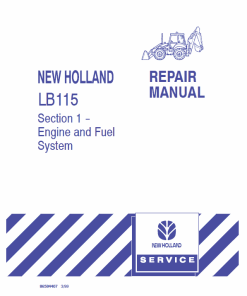 New Holland LB115 Backhoe Loader Service Manual
$34.00
New Holland LB115 Backhoe Loader Service Manual
$34.00 -
×
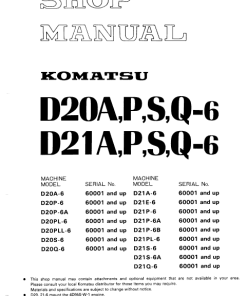 Komatsu D21A-6, D21P-6, D21P-6A, D21P-6B Dozer Service Manual
$32.00
Komatsu D21A-6, D21P-6, D21P-6A, D21P-6B Dozer Service Manual
$32.00 -
×
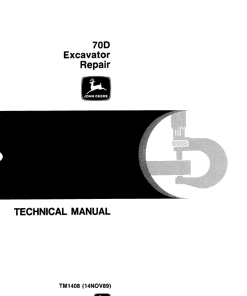 John Deere 70D Excavator Technical Manual (TM1407 and TM1408)
$39.00
John Deere 70D Excavator Technical Manual (TM1407 and TM1408)
$39.00 -
×
 Caterpillar CAT D6H XL Track-Type Tractor Service Repair Manual (9LK00001 and up)
$70.00
Caterpillar CAT D6H XL Track-Type Tractor Service Repair Manual (9LK00001 and up)
$70.00 -
×
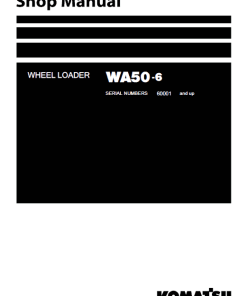 Komatsu WA50-6 Wheel Loader Service Manual
$34.00
Komatsu WA50-6 Wheel Loader Service Manual
$34.00 -
×
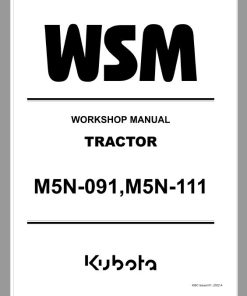 Kubota M5N-091, M5N-111 Tractor Workshop Service Repair Manual
$38.00
Kubota M5N-091, M5N-111 Tractor Workshop Service Repair Manual
$38.00 -
×
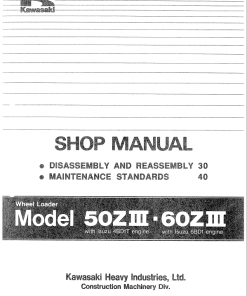 Kawasaki 60ZIII Wheel Loader Service Manual
$33.00
Kawasaki 60ZIII Wheel Loader Service Manual
$33.00 -
×
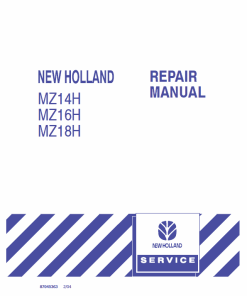 New Holland MZ14H, MZ16H, MZ18H Mower Tractor Service Manual
$24.00
New Holland MZ14H, MZ16H, MZ18H Mower Tractor Service Manual
$24.00 -
×
 Volvo VDT-V88 ETC Screeds Repair Service Manual
$37.00
Volvo VDT-V88 ETC Screeds Repair Service Manual
$37.00 -
×
 Caterpillar CAT D6R II Track Type Tractor Service Repair Manual (AEP00001 and up)
$80.00
Caterpillar CAT D6R II Track Type Tractor Service Repair Manual (AEP00001 and up)
$80.00 -
×
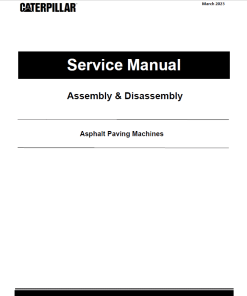 Caterpillar CAT AP-1200 Asphalt Paver Service Repair Manual (2JD00001 and up)
$70.00
Caterpillar CAT AP-1200 Asphalt Paver Service Repair Manual (2JD00001 and up)
$70.00 -
×
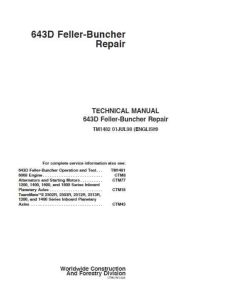 John Deere 643D Feller Buncher Repair Technical Manual
$50.00
John Deere 643D Feller Buncher Repair Technical Manual
$50.00 -
×
 Caterpillar CAT D6R III Track Type Tractor Service Repair Manual (DPS00001 and up)
$80.00
Caterpillar CAT D6R III Track Type Tractor Service Repair Manual (DPS00001 and up)
$80.00 -
×
 Caterpillar CAT D5R2 Track-Type Tractor Service Repair Manual (WDZ00001 and up)
$70.00
Caterpillar CAT D5R2 Track-Type Tractor Service Repair Manual (WDZ00001 and up)
$70.00 -
×
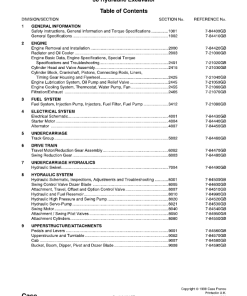 Case CX31, CX36 Excavator Service Manual
$33.00
Case CX31, CX36 Excavator Service Manual
$33.00 -
×
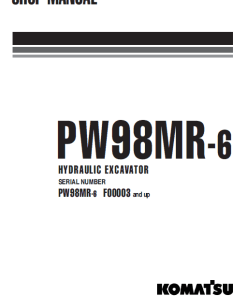 Komatsu PW98MR-6 Excavator Service Manual
$33.00
Komatsu PW98MR-6 Excavator Service Manual
$33.00 -
×
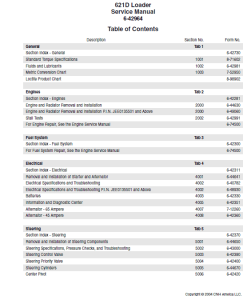 Case 621D Loader Service Manual
$34.00
Case 621D Loader Service Manual
$34.00 -
×
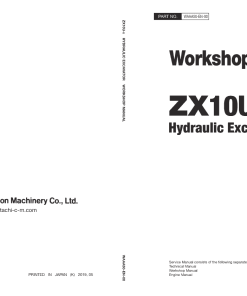 Hitachi ZX10U-6 Mini Excavator Service Repair Manual
$45.00
Hitachi ZX10U-6 Mini Excavator Service Repair Manual
$45.00 -
×
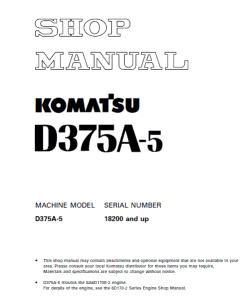 Komatsu D375A-5, D375A-5E0 Dozer Service Manual
$35.00
Komatsu D375A-5, D375A-5E0 Dozer Service Manual
$35.00 -
×
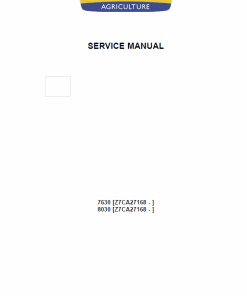 New Holland 7630, 8030 Tractor Service Manual
$35.00
New Holland 7630, 8030 Tractor Service Manual
$35.00 -
×
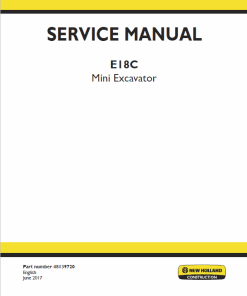 New Holland E18C Mini Excavator Service Manual
$34.50
New Holland E18C Mini Excavator Service Manual
$34.50 -
×
 Caterpillar CAT D11R Track Type Tractor Service Repair Manual (7PZ00001 and up)
$70.00
Caterpillar CAT D11R Track Type Tractor Service Repair Manual (7PZ00001 and up)
$70.00 -
×
 Caterpillar CAT D4E Track Tractor Service Repair Manual (2CB00001 and up)
$70.00
Caterpillar CAT D4E Track Tractor Service Repair Manual (2CB00001 and up)
$70.00 -
×
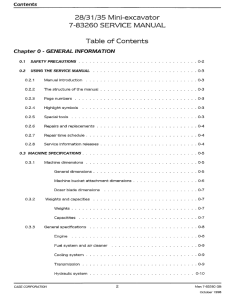 Case 21, 31, 35 Mini-Excavator Service Manual
$31.00
Case 21, 31, 35 Mini-Excavator Service Manual
$31.00 -
×
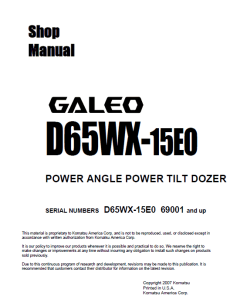 Komatsu D65WX-15E0 Dozer Service Manual
$23.00
Komatsu D65WX-15E0 Dozer Service Manual
$23.00 -
×
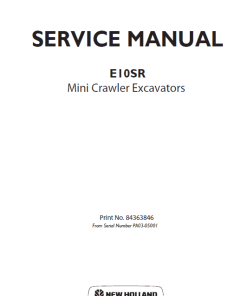 New Holland E10SR Mini Excavator Service Manual
$34.50
New Holland E10SR Mini Excavator Service Manual
$34.50 -
×
 Komatsu D39EX-21, D39PX-21 Dozer Service Manual
$35.00
Komatsu D39EX-21, D39PX-21 Dozer Service Manual
$35.00
Comprehensive Technical Manual
Product Overview
This comprehensive technical manual serves as an essential guide for service personnel, providing key instructions and detailed methodologies for effective maintenance, troubleshooting, and repair operations. It covers essential sections such as General Instructions, Structure and Function, Testing and Adjustments, Troubleshooting, and Manual Specifications, ensuring that technicians are well-equipped to handle a variety of servicing scenarios.
Key Features
- General Instructions: Centralized guidance covering disassembly, assembly, testing, adjustments, and troubleshooting for common service operations.
- Structure and Function: Detailed explanations and diagrams of constituent parts, including block and circuit diagrams, enhancing understanding and training.
- Testing and Adjustments: Comprehensive procedures with photographic aids for essential testing tasks and measurements.
- Troubleshooting: Systematic listing and diagnosis of typical issues, causes, and solutions to enhance service efficiency.
- Manual Specifications: In-depth details on standard dimensions, tolerances, and procedures for effective repairs and maintenance.
Benefits
- Improves technician efficiency with clear, structured guidelines.
- Enhances problem-solving skills with detailed troubleshooting techniques.
- Promotes better understanding through visual aids and diagrams.
- Facilitates seamless conversion between metric and imperial units.
Usage Recommendations
- Familiarize yourself with the General Instructions section to integrate essential service procedures into common practice.
- Utilize the Structure and Function section as a training resource to deepen your understanding of equipment operations.
- Apply Testing and Adjustments processes to perform precise measurements and corrections during service.
- Reference the Troubleshooting section to systematically address and resolve common and uncommon equipment faults.
- Employ the Manual Specifications when performing assembly, disassembly, and ensuring specification compliance.
Conversion Methodology
For converting measurements, employ the Conversion Table:
- Locate the base value in the vertical column and mark its position.
- Find the increment in the top row and draw down vertically.
- The intersection provides the converted measurement. For example, 55 mm equates to 2.165 inches.
Only logged in customers who have purchased this product may leave a review.
Related products
$33.50
$34.00

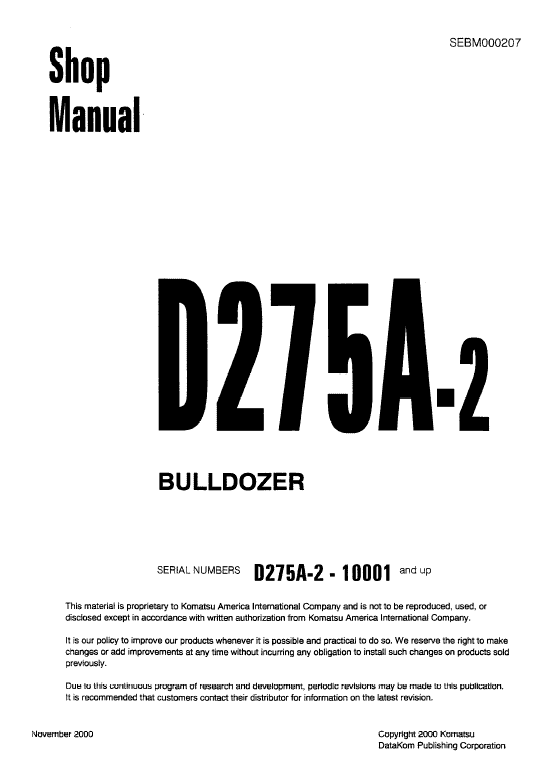
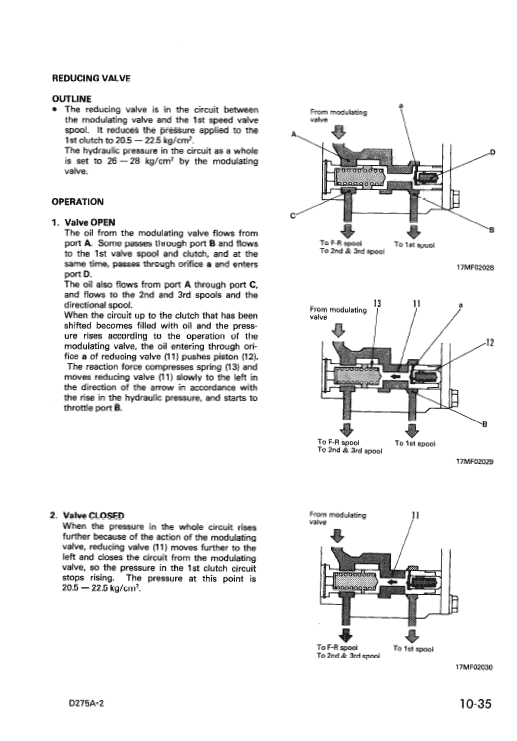
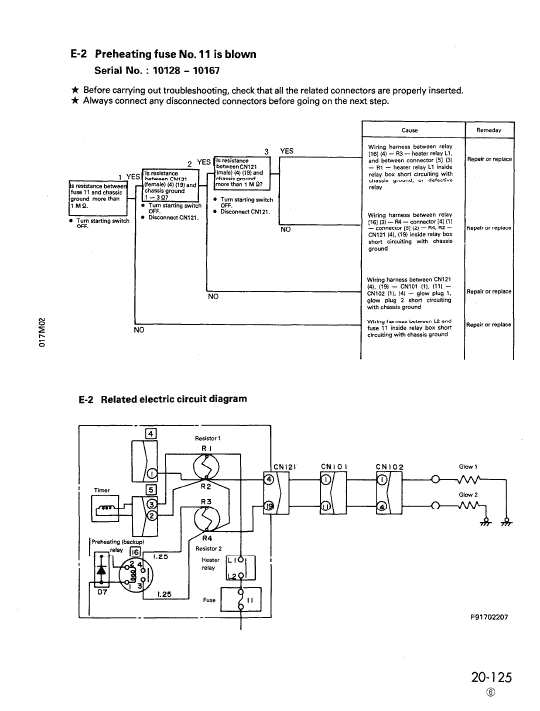
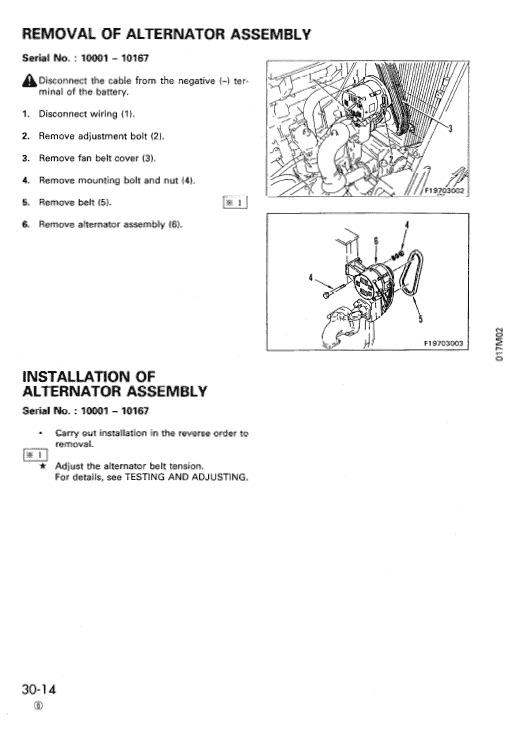
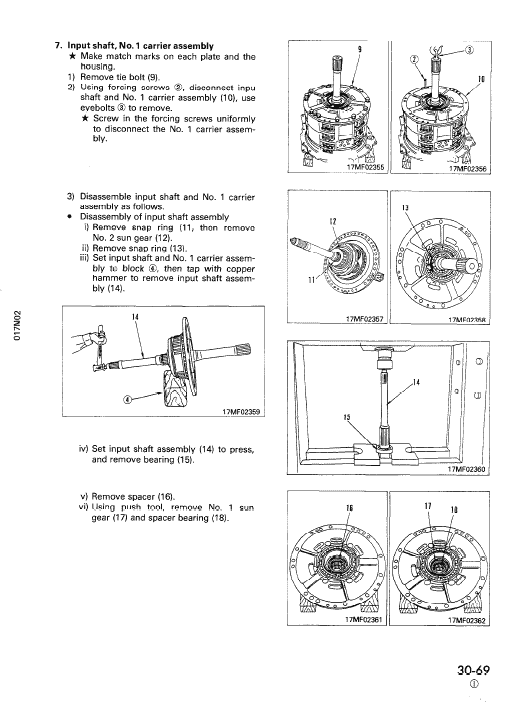
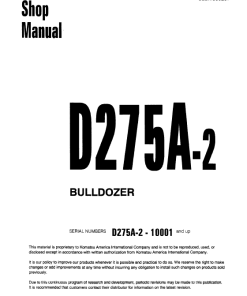
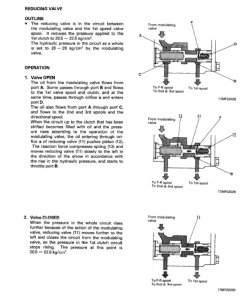
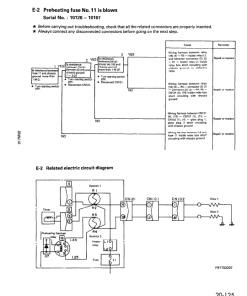
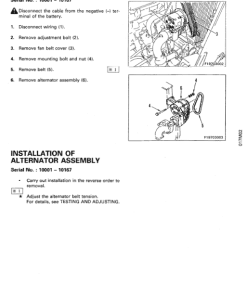
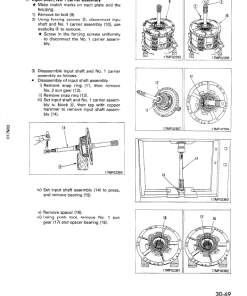

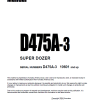
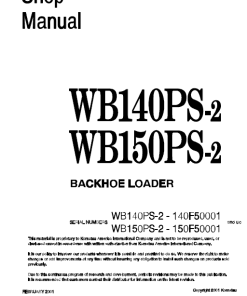
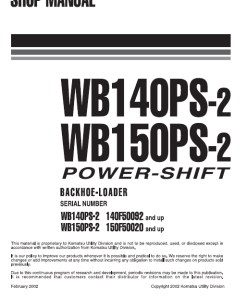
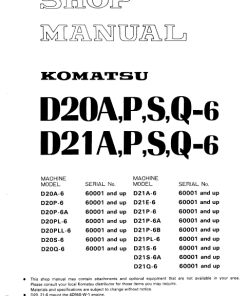
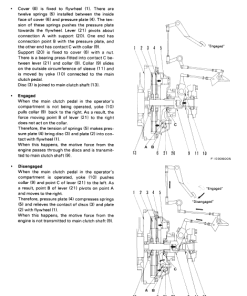
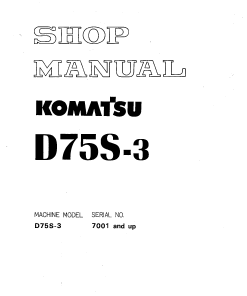
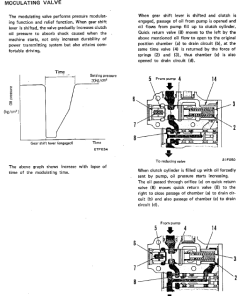
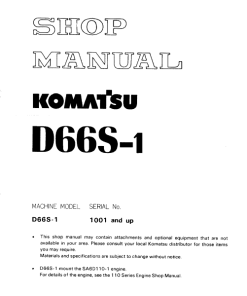
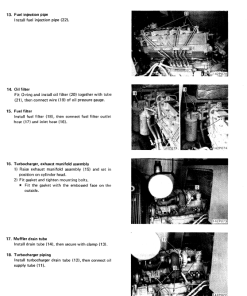
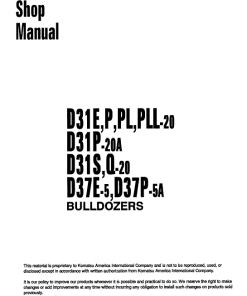
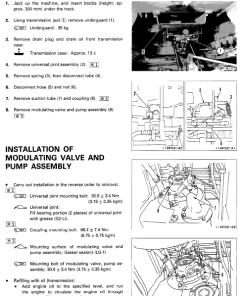
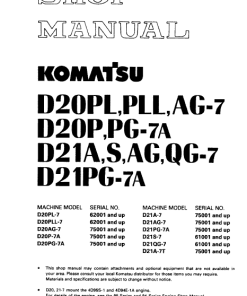
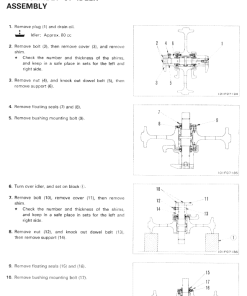
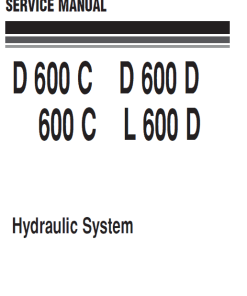
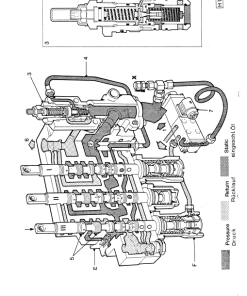
Reviews
There are no reviews yet.